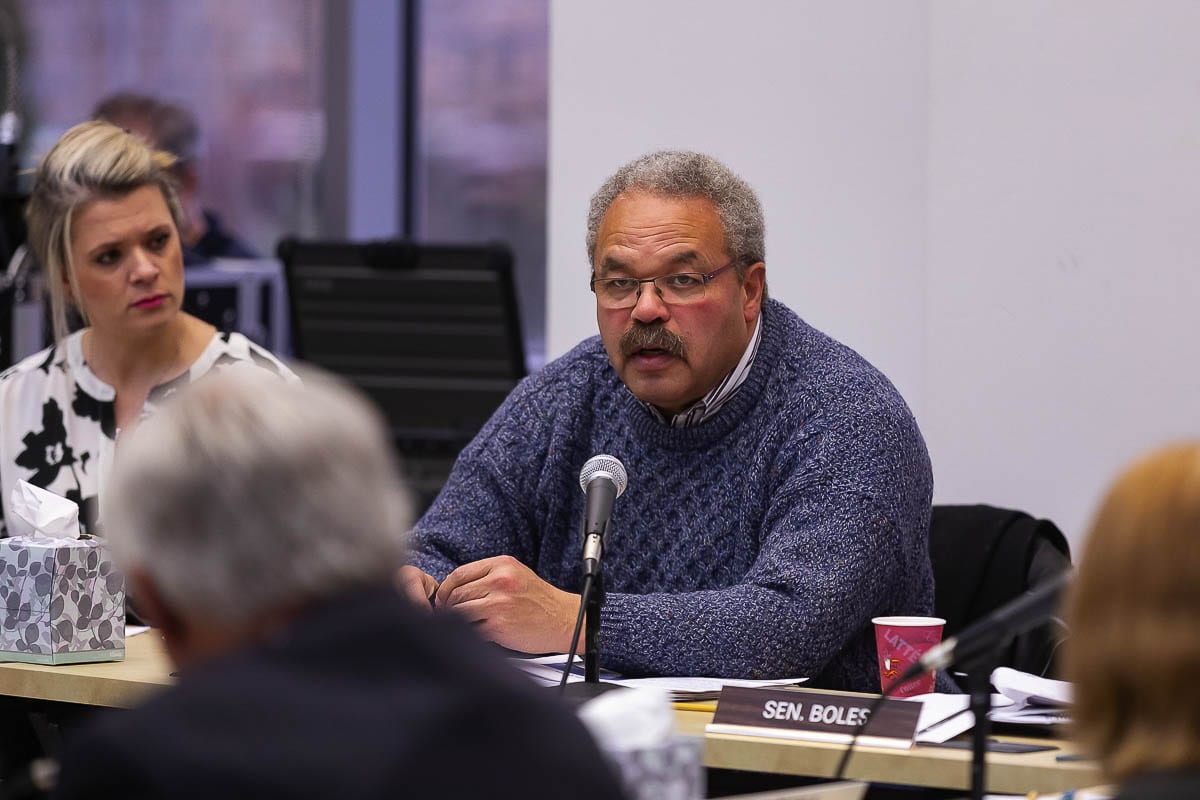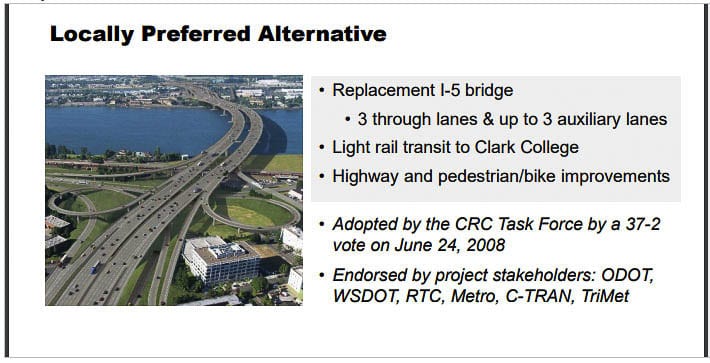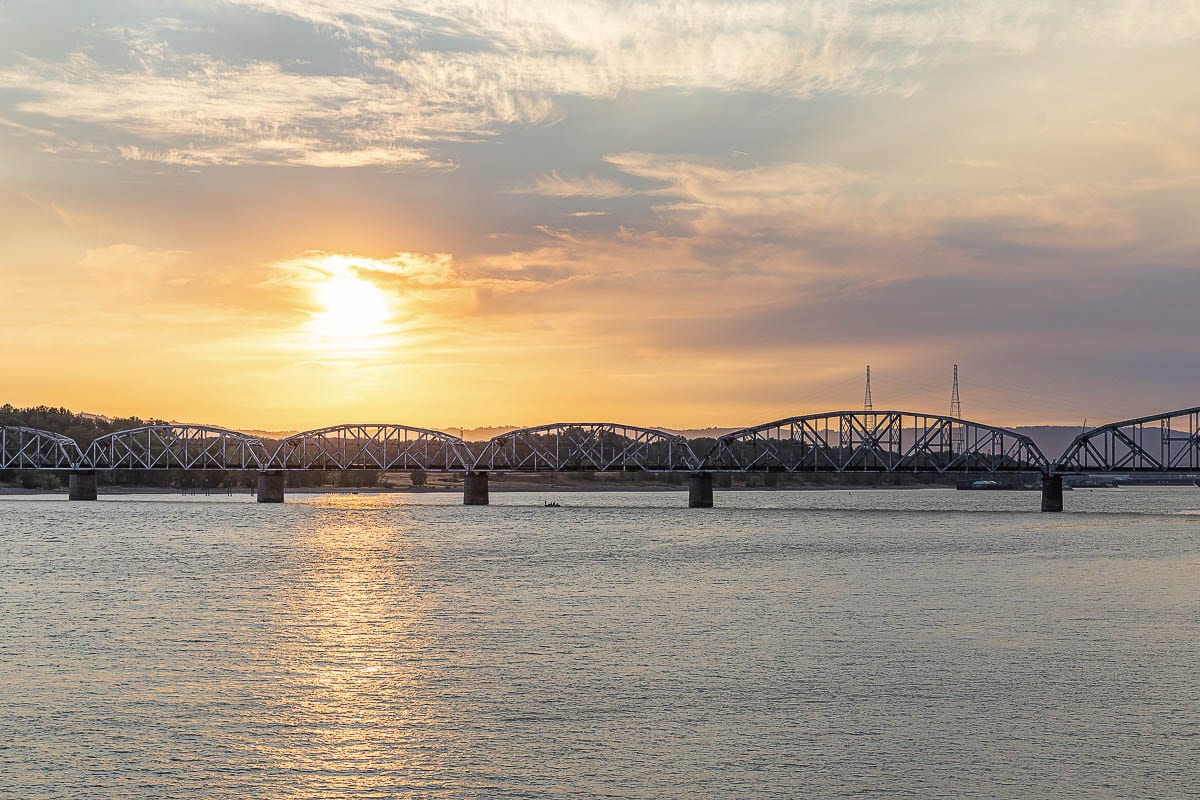Senator believes ‘people value their time the most’
A year ago at the first meeting of the Bi-State Bridge Committee meeting of 16 Oregon and Washington legislators, they began a review of the failed Columbia River Crossing. At the forefront of that initial discussion was the “foundational principles,” which include the Purpose and Need Statement, which defined the problem to be solved.
Many members expressed a desire to consider possible changes to the Purpose and Need Statement at that meeting. The 16 Washington and Oregon lawmakers pledged a clean slate on the long-delayed project, Clark County Today reported a year ago.

“The longest discussion of the afternoon centered on adoption of the committee’s foundational principles,” CCT reported. Several members of the committee weighed in.
“I would move that we change that opening statement to ‘determine if replacing the I-5 Bridge is the primary goal,’” said Oregon Sen. Cliff Bentz. “In other words, folks, I don’t want it said that we walked in here with just replacement of the bridge as the goal.”
Bentz said he wanted to make sure that the committee is open to discussing future plans as well, including potential exploration of a third crossing over the Columbia River. Vancouver Sen. Annette Cleveland noted that there was also another foundational principle that stated the committee would “consider and review future bi-state Columbia River bridge needs for possible repair, maintenance, or new construction.”
Several people noted that the committee should set its top priority as “reducing traffic congestion” rather than simply replacing an aging bridge with another one that won’t address the growing problem of a long daily commute.
“That was not listed in the priority and needs. Only safety and freight was numbered today,” said 17th District Rep. Vicki Kraft (R-Vancouver). “That’s a travesty.”
One member of that committee is Oregon Sen. Lew Frederick. He remarked that he “still carries some scars” from the previous failed efforts to replace the bridge.
Clark County Today reached out to Sen. Frederick earlier this month for a conversation about transportation problems, the Bi-State Bridge Committee and what he would like to see happen moving forward. He voted against the CRC in the past. “He strongly questions the ‘priorities’ of the CRC plan as it continues to plow forward” it was reported at the time.
CCT asked: “At this most recent meeting, October 1, committee members were reminded that it was the Purpose and Need statement that defines the project going forward; and against which all options are measured for success or failure to solve the problem.
“What is your position about possibly changing the Purpose and Need statement? If you would like to see a change, what would that change or changes be? Next, are there any parts of the current Purpose and Need statement that must remain for you to support going forward? Finally, is there a point at which the committee will propose possible changes?”
Sen. Frederick.chose to respond to the final question first. “I think that there’s going to be a point where we’re going to have to be proposing that.
“I considered the proposal incredibly narrow in scope,” he said. “That we only need to deal with was how many cars are coming across the bridge, that’s not what I consider to be an important or an appropriate problem. The thing that we should be dealing with should be looking at significantly more.”
“The need statement needs to be dealt with,” he said.

“But I think that the scope of the project has been too narrowly focused; it has not been multi-modal,’’ Frederick said. “My view is it has been multi-modal only in saying that we should have a light rail line of some form, or a bike lane. That’s not multi-modal in my mind.”
“We have not really addressed the potential in terms of high speed rail, and I’m going to continue to focus before that approach because I think it has a great deal more possibility than the other things that we’ve seen come forward so far,’’ he said. “We (have to be) able to deal with the bottleneck at the bridge as well as the bottleneck quite frankly, in my district before the bridge. We need to be looking at that as well. So those were the two issues that I continue to talk about. I will continue to bring up and until those are really answered to my satisfaction.
“It is not that important for me to have some kind of edifice created that everyone’s supposed to be happy about,’’ Frederick said. “I want to see something that’s going to be effective, and will not damage the rest of the community.’’ Frederick was referring to his north Portland neighborhoods.
More questions and answers
CCT: “Many citizens here in Southwest Washington will be heartened to hear you also mention the other bottleneck (Rose Quarter), south of the bridge area. Because until you fix both of those, there’s still significant traffic backups and congestion.”
Frederick: “That’s exactly right. The people in my district, especially those that are south of Delta Park, already have a high asthma rate as it is. We don’t need anything more. So that’s one of the concerns that I have. Absolutely.”
CCT: “You mentioned the high speed rail. If I’m remembering correctly, the current focus of the discussion is the two and one half miles either side of the border with Washington. Part of your interest would be to make that circle wider, if you will, so that you could go west, maybe for a high speed rail line. And to go farther south, in order to include the bottleneck at the Rose Quarter. Is that fair?”
Frederick “I think the Rose Quarter is a different issue in some ways. But we have been struggling with it. I am particularly interested in finding a way for us to really deal with the railroad bridge in a way that creates a better and easier route for barges and other river traffic, but also upgrades the railroad bridge. That means talking with Burlington Northern and getting some agreement on it.
“But I think that if we are able to put a high speed rail line right there at the where the railroad bridge is, we basically begin the process of having a high speed rail line that goes from Eugene, all the way up to Vancouver, BC. My ultimate vision would be to have a high speed rail line that basically goes all the way along Oregon; along the west coast. The line goes over to Klamath Falls from Eugene. We need to find some way to get a high (speed) rail line and use that.”

Frederick shared a story of visiting China and riding their high speed rail line, traveling 280 kilometers an hour. He acknowledged their government and military can go anywhere and do whatever it wants, making it easy to build high speed rail. “The success of that moving people was rather extraordinary.
“We need to be looking at how we can actually move people, move goods better. I think that if we were able to create a rail line between Vancouver and on the West Coast. It would be a major economic impact on the whole West Coast.”
CCT: “I believe Metro has an upgrade for that Burlington Northern bridge in its plans for 2028 to 2040. They want to install a center lift span in the middle of that BNSF bridge, I think for $35 million. That would eliminate some of the bridge lift issues.
“I don’t know if a high speed rail would be able to use that same line or if you would need to create a second separate line alongside that BNSF rail line, so that the High Speed Rail could use those tracks or not. But I know Metro does have something in their plans for that rail bridge. crossing the Columbia “
Frederick: “There are several sets of engineering plans that include replacing the railroad bridge. The most ambitious one replaces the bridge, puts in a high speed rail, puts in a light rail, puts in a truck lane. That basically moves the trucks from the Port of Vancouver to the Port of Portland and back. It allows those trucks to get off the Interstate Bridge and go across that particular bridge and then connect with I-5 in the downtown Vancouver area. So there are a number of number plans out there that I’ve seen last year.
“My point briefly though, we are talking about issues of transportation in a much broader geographic footprint than what we had before. In the previous event, we were dealing with the bridge itself and the movement specifically of jobs, cars and trucks. I think that if we start talking about the movement of people, then we bring in the question of whether we can put a high speed rail line in there versus just looking at the number of cars coming across the bridge.”
CCT: “That would be in the hopes of reducing the number of cars because people would use the alternate form of transportation?”.

Frederick: “That is the hope, that is the plan.
“The other thing quite frankly is unless you put an express lane on a light rail system, people don’t want to take the time to spend an hour basically getting back and forth. I mean the last testament that I had of the impact on cutting back the time for travel on the freeway on the original (project) was about one minute.
“That’s all. That is not enough. That does not speak to what people want. It speaks to what engineers may want. But it does not speak to what people want. People would like to see on a faster commute.
“So how do we do that?
“Well, one of the ways to do that is to give them a lot more options. It should be noted that the Frog Ferry concept that we’ll be able to move some folks as well. That would be an interesting addition. It is getting some interest. I’m not sure whether it’s sort of a novelty interest or not, but it’s certainly getting some interest. I think it’s appropriate to get them in.
“We need to be able to talk about what it is we really want. We want to see more people being able to move more quickly through this particular bottleneck in a way that does not create problems for work environments and does not create problems for the people in the area, that is not a financial boondoggle. So I think we should be looking at it in a much broader footprint.”




